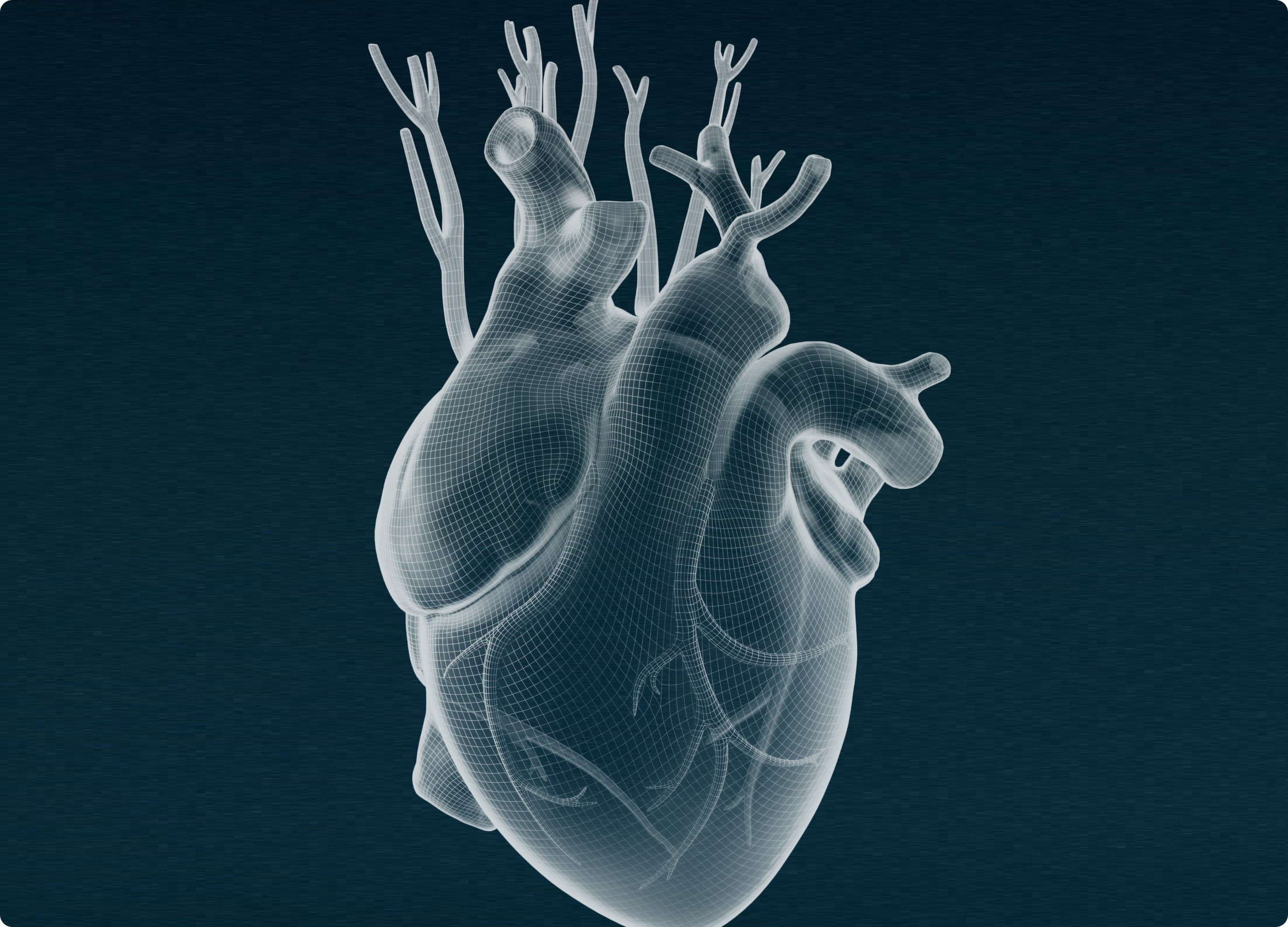
AFib: Atrial fibrillation symptoms and diagnosis
What is AFib? Learn about atrial fibrillation, its signs, symptoms, and risks like stroke or heart failure, plus how to detect and manage...
Because an elevated body fat percentage is associated with higher cholesterol and hypertension, knowing your body fat percentage can give you valuable information about your health.

💡 In short:
Everyone has a different body fat distribution, and according to the World Health Organization, measuring body fat is key to assessing whether a person is overweight, obese or at a healthy weight.
Learn about the different types of fat and their required proportions to achieve a healthy body composition.
Fat plays an important role in good health—it’s the body’s way of storing energy to support your metabolism. Overall, there are two different types of body fat, and it’s important to know the difference. They include:
Storage fat is found around the organs and under the skin. It also provides protection and acts as an insulator to keep the body warm.
"The factors determining fat mass in adult humans are not fully understood, but increased lipid storage in already developed fat cells (adipocytes) is thought to be most important."
Essential fat is located in your nerves, brain, bone marrow and in the membranes that protect the organs. Composed of fatty acids, essential fat plays a significant role in health, because it provides energy reserves and protects the internal organs.

As shown in the diagram above, adipocytes consist of a nucleus and a fat reservoir.
If you consume more calories than you burn, fat cells will grow and multiply—and if you lose weight, the body burns fat inside the fat cells.
Generally, there are two different types of body fat: essential fat (fat that ensures the proper functioning of your body), and storage fat (fat that protects your organs from shock and trauma). Broken down even further, fat can be categorized as follows:
White fat
White fat is stored under the skin and around the organs, and is the body’s way of storing energy for later use. It also releases hormones. High amounts of white fat can increase your risk of diabetes, stroke, and disease.
Brown fat
Brown fat is sometimes called “good” fat. It helps to produce body heat to keep you warm in cold conditions. Interestingly, human newborns and hibernating mammals have high levels of it, and lean people tend to have more of it than overweight people. When it is stimulated, it can burn calories.
Beige fat
Beige fat is a relatively new—and really interesting—category of fat cells. Beige fat cells are located near the collarbone and along the spine. They actually burn calories, so researchers are looking at how they might be used in
Subcutaneous fat
Subcutaneous fat lies just under the skin. It may be harmless and even protect against some diseases, but if it’s over the belly, it may contribute to health problems.
Visceral fat
Visceral fat is the “deep” fat that wraps around your organs. It can be dangerous, increasing insulin resistance—and it may even be linked to dementia, as suggested in a study from the Boston University of Medicine.
First, it’s important to know that healthy body-fat levels are different for men and women. The American Council on Exercise (ACE), which provides a body fat calculator based on skinfold measurement, says there are many factors that play into the right number for you.
Thus, body fat percentage results are usually sorted by age and sex according to the following categories.
Female bodies need more fat to maintain a good hormonal balance, as well as healthy and regular menstrual cycles. Females tend to have 6-11% more body fat than males.

For males age 20 to 39, having a body fat percentage that is above 25% is considered obese. This means that no more than a quarter of your total body weight should consist of fat.

There are many ways to determine your body fat percentage. As you age and your lean muscle progressively decreases, it is important to keep these numbers in mind.
Body fat percentage is not the same as Body Mass Index (BMI), which is often used as an indicator of your overall health based on your height and weight and doesn’t take your total body composition into account.
A study on BMI accuracy in obese people defines this metric as an "indirect measure of obesity," because it doesn't distinguish lean body mass from your total body fat.
In this study, 8% of all men and 7% of all women were incorrectly classified as obese using standard BMI cutoff points.
Some smart scales now offer a set of features that include the measurement of your full body composition via bioelectrical impedance analysis.
Bioelectrical impedance analysis is a simple and non-invasive way to measure body fat. BIA sends a tiny, harmless electrical current through your body to measure the total percentage of water. From there, your body fat percentage can be calculated.
By measuring the thickness of a skin fold at key locations on the body, you can estimate your total amount of fat and then deduce your body fat percentage using charts.
In this method, a tape measurement is placed around your waist, neck, and hips. The CDC says your body circumference "can be used as a screening tool but is not diagnostic of the body fatness or health of an individual. A trained healthcare provider should perform appropriate health assessments in order to evaluate an individual’s health status and risks."
DXA scans are performed in clinical environments and use spectral imaging (an X-ray) to measure your bone mineral density. DXA provides detailed information about your tissue composition, and is able to distinguish lean tissue mass from fat tissue mass with proven accuracy. However, these expensive tests are more often used in clinical obesity cases.
Lean body mass includes your bones, muscles, organs, and tissues, which all contain some essential fat. Having a high percentage of lean fat mass can boost your metabolism. Body fat percentage, however, includes your total body fat, and too much of it—especially visceral fat—can be dangerous.
Carrying excess visceral fat—especially around the abdomen—has been linked to a number of health risks, including heart disease, breast cancer, and colorectal cancer. Some studies have indicated that abdominal obesity may increase stroke risk in women (but not necessarily men). It can also cause glucose intolerance, which may lead to insulin resistance and type 2 diabetes.
We did a study of more than 3,500 Withings scale users and here’s what we found:
Diets don’t work, but they’re really popular. Unfortunately, no matter what diet they chose, people gained back 65% of the weight they lost—and the regained weight was mostly fat.
Healthy eating habits are really powerful. We found that those who ate four or more fruits and vegetables a day, consumed fewer than 2 dairy products a day, and ate meals that were cooked using fresh products were less likely to be overweight. Those who skipped meals, ordered takeout, ate red meat 3 or more times a week, and ate while doing other activities (such as working or watching TV) were more likely to be overweight.
Tracking your weight regularly. We found that when overweight or obese users track their weight and food intake regularly, they lose over 7 times more weight than users who are not regular trackers. We also found that people who weighed themselves more tended to be more active. Why? One theory: A daily weight reminder can help to remind you of your weight goals and healthy behaviors.
Get some sleep. Our data shows that better sleep may impact your weight. In a study, we found that an astounding 66.5% of users who slept an average of less than 7 hours a night were overweight. We also found that people who slept 7–8 hours a night were the least likely to be sedentary.
So if you want to lose weight, how should you set a goal? Doctor's guidelines recommend aiming for 1% to 3% body fat loss per month. However, it's important to remember that individual results will vary due to the many factors that influence body composition.
So, if you’re looking to lose weight and keep it off, you might want to hold off on the fad diet—and consider making some simple lifestyle changes instead.

AFib: Atrial fibrillation symptoms and diagnosis
What is AFib? Learn about atrial fibrillation, its signs, symptoms, and risks like stroke or heart failure, plus how to detect and manage...

What is BMI? Understanding normal Body Mass Index for men and women
What is BMI? Body Mass Index helps determine if you're underweight, normal weight, or overweight. Learn how BMI works for men and women.

Healthy body composition: What it is and how to improve it
What is body composition? Learn how to measure it, what defines a healthy body composition, and tips to improve your fat, muscle, and water...
Join millions of users who are improving their health with Withings. Sign up to discover the entire Withings ecosystem, our latest products, and exclusive offers.
By registering, you agree to receive advertising e-mails from Withings. However, if you change your mind, you can unsubscribe at any time.

